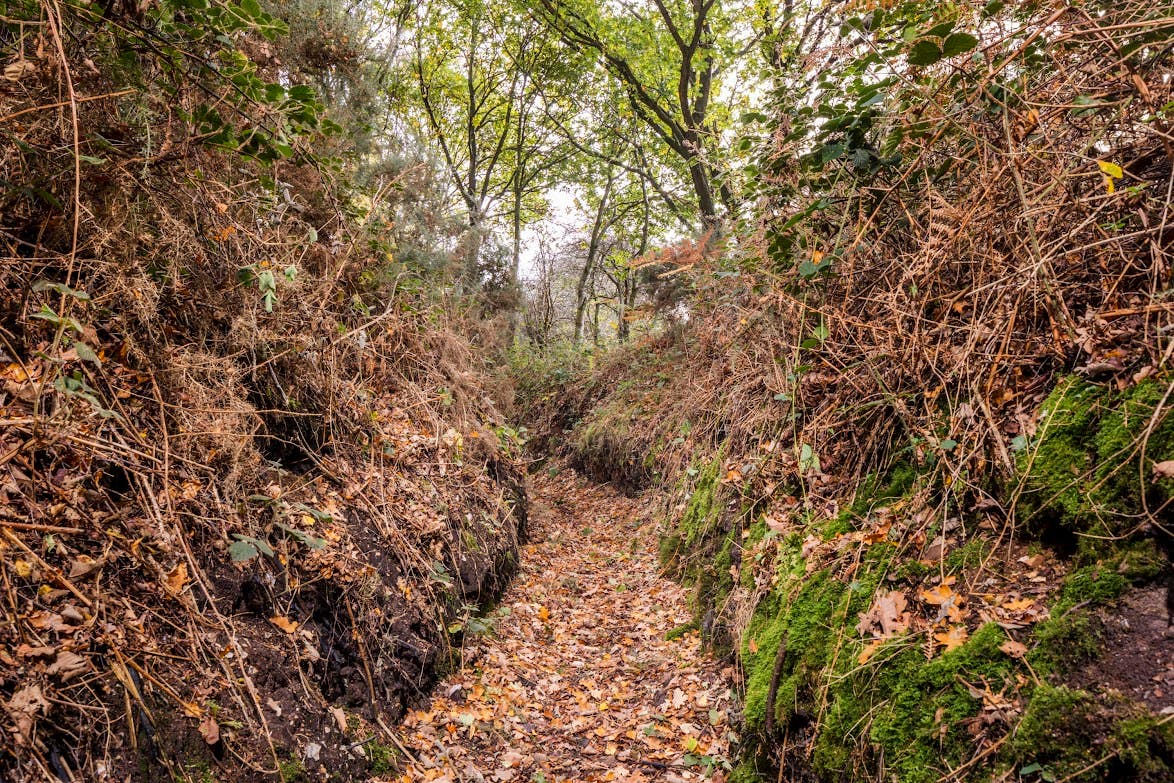Network of First World War training trenches among sites added to heritage list
Two Victorian cabmen’s shelters were also listed at Grade II along with an 18th-century watermill drawn by the famous landscape artist John Constable.

A network of First World War training trenches and two centuries-old shipwrecks are among 240 sites that have been added to the National Heritage List for England this year.
Two Victorian cabmen’s shelters were also listed at Grade II along with an 18th-century watermill drawn by the famous landscape artist John Constable.
Discovered at Shingles Bank off the Isle of Wight, the shipwrecks, named NW96 and NW68, were dated to the 16th and 17th centuries respectively and have been granted the highest level of protection because of their extreme rarity.
It is thought that NW96 predates 1580 because of a lead ingot cast from a furnace known as a bole which fell out of use around that time.
The network of trenches found in Norfolk is also said to be rare in that many other examples have long been filled in.
It was used by the Lovat Scouts, a regiment of the Scottish Highland Yeomanry, which began during the Boer War and fought in Gallipoli in 1915 and later in the Second World War.
Commanded by Lord Lovat, uncle of SAS founder David Stirling, the Scouts pioneered the use of unconventional tactics and are credited with introducing the camouflaged sniper’s ghillie suit into the British Army.
Its soldiers were drawn from among workers of the Scottish Highlands, and Stirling would go on to employ their pioneering tactics against the Nazis and Italians in North Africa.
Heritage minister Lord Parkinson of Whitley Bay said: “Heritage sites tell the story of our country, boost tourism, and help us understand and take pride in where we live.
“By listing buildings and protecting wrecks, battlefields and monuments, we can safeguard our history for future generations to enjoy as well.
“With an extra 240 places added to the list this year, I’m pleased to join Historic England in encouraging everyone to get out and explore our shared heritage this Christmas.”
Among the Grade II listed buildings are two cabmen’s shelters – at Pont Street, Kensington, and Chelsea Embankment.
The shelter at Pont Street, built in 1892, is still open more than a century later selling breakfast and coffee to black cab drivers.
Only 13 of the 61 original shelters in London have survived, with many having been bombed by the Luftwaffe or bulldozed during construction work.
They were the idea of Captain George Armstrong, editor of The Globe newspaper, and gave cabbies with their horse-drawn Hackney carriages somewhere to rest and eat at any time of the day or night without leaving their vehicles unattended.
In the Lake District, walkers can find a newly listed Grade II watermill on a tributary of the River Derwent near Borrowdale, which was once used to mill corn for the local community in the 18th century.
Built of rubblestone and slate, Coombe Gill Mill was also a source of inspiration for artists, the most famous being John Constable, who sketched a pencil and watercolour picture in 1806 while on a tour of the area.
Though the internal milling machinery has long since disappeared, traces of it can still be seen in the fabric and shape of the building, such as the original plinth which supported the milling equipment and the attached corn drying kiln.
Chief executive of Historic England, Duncan Wilson, said: “The variety of listings this year illustrates the rich diversity of our shared heritage and the importance of everyday places – from an Edwardian bank to a London cab shelter to a 19th-century watermill – that make up the fascinating fabric of our past.
“Places like this help to make us proud of where we live. Listing recognises their value so they are protected for the future and everyone can continue to enjoy them.”
Bookmark popover
Removed from bookmarks